Today we shall talk about control. But not over the Force. Rather, over objects and players. Allow me to remind you that we denote an ability on the stack, a card, a copy of a card or ability, a spell, a permanent and an emblem as objects.
This card you don’t need,
To Master Yoda give it you will!
Fanfic
In a classic Magic game, players control permanents, spells, abilities and emblems. It is also possible to gain control of another player or his/her turn, but we shall talk about it in our next class.
109.4. Only objects on the stack or on the battlefield have a controller. Objects that are neither on the stack nor on the battlefield aren’t controlled by any player. See rule 108.4. There are five exceptions to this rule:
109.4a. An emblem is controlled by the player that puts it into the command zone. See rule 113, “Emblems.”
109.4b. In a Planechase game, a face-up plane or phenomenon card is controlled by the player designated as the planar controller. This is usually the active player. See rule 901.6.
109.4c. In a Vanguard game, each vanguard card is controlled by its owner. See rule 902.6.
109.4d. In an Archenemy game, each scheme card is controlled by its owner. See rule 904.7.
109.4e. In a Conspiracy Draft game, each conspiracy card is controlled by its owner. See rule 905.5.
The cards that aren’t either permanents or spells, such as cards in graveyards, in exile, in the hand, in the library etc., aren’t controlled by any player.
However, each object has an owner. An owner and a controller, if any, may be different players.
108.4. A card doesn’t have a controller unless that card represents a permanent or spell; in those cases, its controller is determined by the rules for permanents or spells. See rules 110.2 and 111.2.
108.4a. If anything asks for the controller of a card that doesn’t have one (because it's not a permanent or spell), use its owner instead.
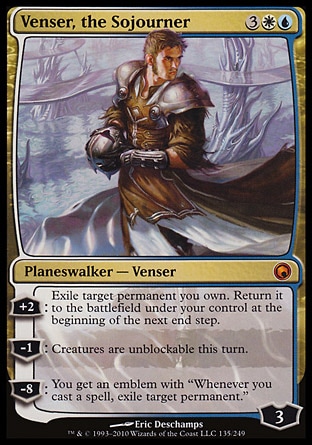
The first ability of Venser, the Sojourner targets a permanent you own. You don’t have to be in control of it.
The word “You” on an object relates to its controller (or to its owner, if it doesn’t have one):
109.5. The words “you” and “your” on an object refer to the object’s controller, its would-be controller (if a player is attempting to play, cast, or activate it), or its owner (if it has no controller). For a static ability, this is the current controller of the object it’s on. For an activated ability, this is the player who activated the ability. For a triggered ability, this is the controller of the object when the ability triggered, unless it’s a delayed triggered ability. To determine the controller of a delayed triggered ability, see rules 603.7d–f.
Note that “you” in the ability’s text doesn’t make it targeted.
And now on to the scariest part — the layers.
613.1b. Layer 2: Control-changing effects are applied.
As you remember, first the copy effects are applied, the next in the order are the control-changing effects. Let’s check out this completely unique card:
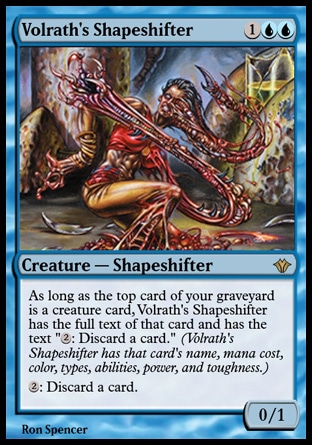
The copying effect on Volrath’s Shapeshifter was modified into text-changing effect. For the modern version of the Shapeshifter’s rule text, according to the rules for the Interaction of Continuous Effects, you will get it under your control (layer two), and then it “reads” the top card of your graveyard and gets its text (layer three — text-changing effects) and its ability.
Now imagine that the Shapeshifter has its original text, and we “borrow” it from our opponent. Let’s see what happens to it. First, on layer one it copies the characteristics of the creature that’s on top of the opponent’s graveyard, then it is under our control. Hmm… Does the ongoing copying effect end? No, Volrath’s Shapeshifter keeps peeking into our opponent’s graveyard. It seems, something is wrong with the way this card works…
Oh, Volrath's Shapeshifter. Sometimes when the rules are systemically changed for the betterment of the game as a whole, and for most cards in general, one or two cards get thrown under the bus. That's what happened to Volrath's Shapeshifter. When the continuous effect layer system was implemented, different kinds of continuous effects were broken out so they'd apply in a set sequence. It was determined that copy effects would apply before control-change effects because all existing cards—except one—would work that way. (Switching those layers to save Volrath's Shapeshifter is not an option; if we did, Copy Enchantment copying Confiscate, or Clone copying Sower of Temptation, to name a couple of more modern examples, would cease to work as you'd expect.)
The reason Volrath's Shapeshifter breaks under the layer system is that it cares about the top card of its controller's graveyard—so its copy effect is dependent on who controls it. Say Player A controls Volrath's Shapeshifter, then Player B Confiscates it. Volrath's Shapeshifter will continue to look at Player A's graveyard. That's because Volrath's Shapeshifter knows who its original controller was, and its copy effect is applied before Confiscate's control-change effect is applied to swing it over to Player B.
To handle this, Volrath's Shapeshifter's effect was changed from a copy effect to a text-changing effect (which happens after control-change effects). Most text-changing effects change a single word of text, like Mind Bend does. Volrath's Shapeshifter changes all its text, and expands the definition of "text" to include color and mana cost, among other things. It's ugly, but it does the trick.
I'd love to tell you that I have an elegant fix for this card, and that's why it's on the list. Nope. I'm deleting some unnecessary text from the card, putting in a comma, and fixing the italicization of its reminder text. (The unnecessary text is that Volrath's Shapeshifter's ability says that it works "as long as Volrath's Shapeshifter is in play," but that goes without saying, so this is just redundant.)
— Mark L. Gottlieb
However, Volrath’s Shapeshifter isn’t all that simple. For those who like to work their brains out on the rules, here’s a great problem: If the top card of my graveyard is Vesuvan Shapeshifter and I put a Volrath’s Shapeshifter onto the battlefield, can I turn my Volrath’s Shapeshifter face down at the beginning of my upkeep?
For clarity, I'm going to refer to our two Shape-shifting friends as VeSS and VoSS. Our first question is: Can we turn the VoSS face down if the top card of the graveyard is a VeSS?
VoSS doesn’s "copy” the top card of the library in the same way that other copy effects do (in fact, it’s not a copy effect at all. For a few VERY technical reasons it instead has an ability which gives it the text of the top card while in play. The upshot of this is that VoSS doesn’s work the same way as Clone-derivatives (including, for example, its ersatz relative Vesuvan Shapeshfiter). Instead, it’s ability is text-changing, and applied in layer 3.
“As ~this~ comes into play” abilities (normally abreviated AsCIP) are applied before a creature is considered to be “in play”. Because VoSS’s ability only applies once in play, it won’s gain the "comes into play as a copy of a creature” ability in time to do anything… we can check this in the Gatherer rulings for VoSS. So the VoSS will arrive as a 0/0 creature (ie: a blank VeSS), neither the copy effect nor the "Turn-facedown ability” will be present… and the VoSS will and be put into the graveyard as a state based effect. Whoops.
This more or less makes the second question (can we turn it face down) inappropriate… but since we gathered here in a rules fanclub, I will suppose that some of the readers are still wondering. Let’s take a look at other possible scenarios.
Question: If the top card of the graveyard is a creature with a triggered ability, will it trigger when VoSS enters the battlefield?
Yes. Again, the rulings in Gatherer make this clear. Unlike the abilities “As ~this~ enters the battlefield”, triggered abilities like “When ~this~ enters the battlefield” are based on the card text AFTER it arrives in place… and at that moment VoSS' ability to change text is already active.
Question: If VoSS is already face down (through Ixidron or Backslide, for instance), and the top card of the graveyard is a creature with Morph ability, can VoSS be turned face up?
Yes. In order to “unmorph” a creature we show what the card will look like after it is turned face up (CR 502.26). And we know that after VoSS is turned face up, it will have the text of the card in the graveyard… And if that card has a Morph cost, it may be paid and VoSS may be turned face up.
Last question: If the top card of the graveyard is VeSS, and I have VoSS face down on the battlefield… and I turn VoSS face up for 1U, what happens?
Alright, the ability of VoSS to change text doesn’s work as long as the card isn’s face up… And like the abilities “As ~this~ enters the battlefield”, abilities “As ~this~ is turned face up” function before the card is actually considered to be face up. So, at the time concerned VoSS doesn’s have VeSS’s ability to copy anything… and it will look as a blank VeSS (0/0 and dies soon).
I think this fulfills our fanclub program for a month… I hope you enjoyed.
Control of permanents
Paermanents are cards and tokens on the battlefield. Tokens and cards are different in terms of control.
110.2. A permanent's owner is the same as the owner of the card that represents it (unless it's a token; see rule 110.5a). A permanent's controller is, by default, the player under whose control it entered the battlefield. Every permanent has a controller.
110.2a. If an effect instructs a player to put an object onto the battlefield, that object enters the battlefield under that player's control unless the effect states otherwise.
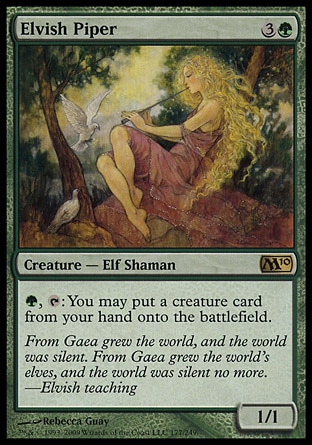
Elvish Piper’s ability puts a creature under your control. You are both the owner and the controller of the creature.

Yavimaya Dryad’s ability allows you to put a Forest under your opponent’s control. You are still the Forest’s owner.
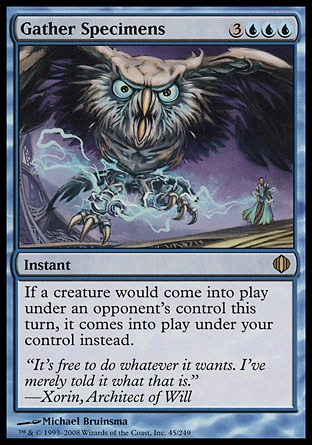
If your opponent casts a creature spell, that creature enters the battlefield under your control. Your opponent is still the owner of the card.
there is a special rule for tokens:
110.5a. The player who creates a token is its owner. The token enters the battlefield under that player's control.
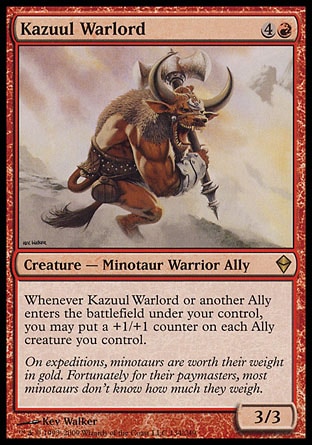
Kazuul Warlord’s ability puts tokens under your control. You are both the owner and the controller for them.
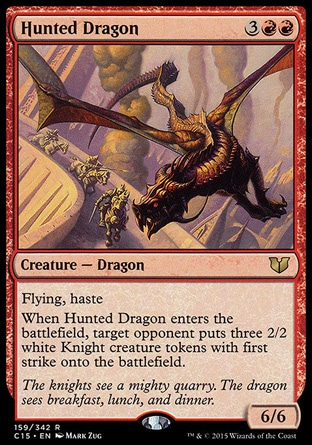
The Hunted Dragon’s ability places tokens under an opponent’s control. The opponent will be their owner. Gruul Charm will not be able to return them under your control.

Crafty Cutpurse’s EtB-trigger effect changes the process of tokens creating: the tokens owner is your opponent, but they are created under your control.
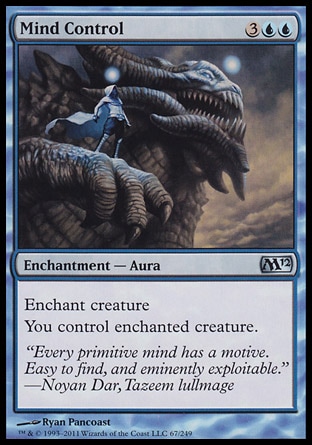
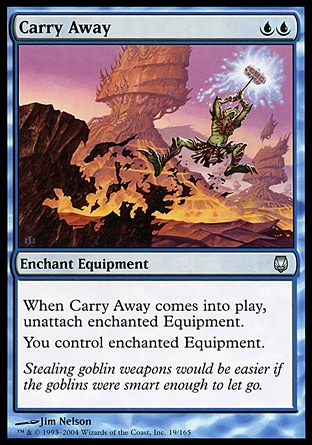
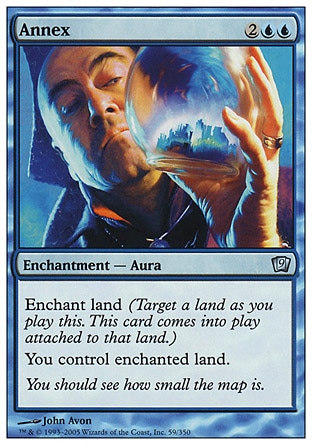

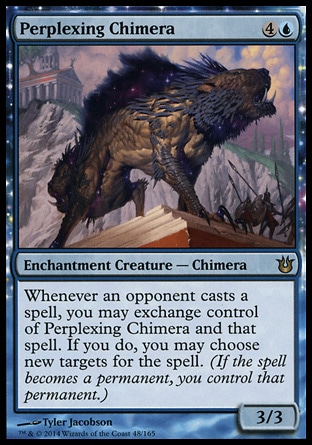
Some permanents have abilities (activated or triggered), through which you could gain or transfer control of a permanent. There are also spells with control-changing effects.
Permanents attached to each other may be controlled by different players. A change of control over one of such permanents does not change control of another.
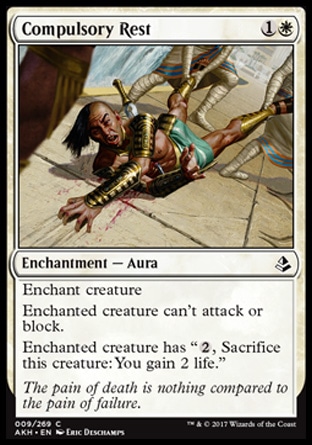
As a rule, Compulsory Rest is attached to a creature an opponent controls. This way, the creature is controlled by one player, and the aura by another.
For instance, by playing Flame Fusillade (Until end of turn, permanents you control get “{TAP}: This permanent deals 1 damage to target creature or player.“), you will be able to “ping” the opponent with your arrest attached to the opponent’s creature.

By gaining control of the equipped creature, a player doesn’t gain control of the equipment. However, all the bonuses granted by the equipment to the creature are still in effect. The controller of the equipment may activate the Equip ability in his or her turn to re-attach the equipment to a creature he or she controls. The controller of the “borrowed” creature cannot do so, as he or she has no control of the equipment.
Upon the change of control, the object gets a new checkpoint on the control timeline. As a result, if the control-changing effect does not give the creature haste, we will deal with a restriction on activating abilities and attacking:


The “Newly-borrowed” through Lay Claim, and immediately “animated” Mutavault cannot give mana. Activated abilities of creatures that include a tap symbol in its cost require continuous control over the creature since the beginning of the player’s most recent turn:
602.5a. A creature's activated ability with the tap symbol or the untap symbol in its activation cost can’t be activated unless the creature has been under its controller's control since the start of his or her most recent turn. Ignore this rule for creatures with haste (see rule 702.10).
When a permanent changes control, some of its characteristics may change:


An opponent controls three artifacts, including Rusted Relic. You control no artifacts. If you cast Mind Control targeting the relic, as soon as the Relic falls under your control, it stops being a creature, and therefore, Mind Control can no longer enchant it.
702.5a. Enchant is a static ability, written “Enchant [object or player].” The enchant ability restricts what an Aura spell can target and what an Aura can enchant.
Upon the nearest SBA check, Corrupted Conscience goes to the graveyard, and the opponent gets the Relic back. It will have “summoning sickness” though, since the control period was not continuous.
The permanent whose controller has changed leaves combat:
506.4. A permanent is removed from combat if it leaves the battlefield, if its controller changes, if it phases out, if an effect specifically removes it from combat, if it's a planeswalker that's being attacked and stops being a planeswalker, or if it's an attacking or blocking creature that regenerates (see rule 701.12) or stops being a creature. A creature that's removed from combat stops being an attacking, blocking, blocked, and/or unblocked creature. A planeswalker that's removed from combat stops being attacked.
Change of control does not influence the limitations on activating the permanent’s abilities:
602.5b. If an activated ability has a restriction on its use (for example, “Activate this ability only once each turn”), the restriction continues to apply to that object even if its controller changes.
606.3. A player may activate a loyalty ability of a permanent he or she controls any time he or she has priority and the stack is empty during a main phase of his or her turn, but only if no player has previously activated a loyalty ability of that permanent that turn.
If the planeswalker “paid a visit” to your opponent and returned to your control within a turn, the activation limit still counts: no more than one per turn.

It doesn’t matter who activated the whelp in the course of the turn. The only thing that matters is how many times.
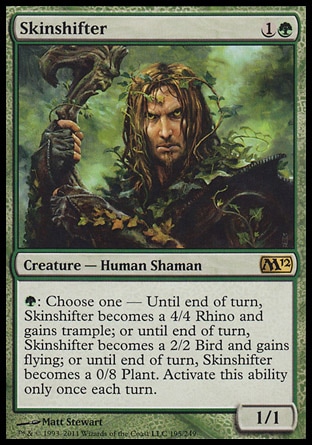
If you have activated Skinshifter’s ability and then the cunning opponent “snatched” it, he cannot shift its shape again on that turn.
Control of Spells and Abilities
602.2a. (…) [Activated] ability is created on the stack as an object that’s not a card. (…) Its controller is the player who activated the ability. (…)
603.3a. A triggered ability is controlled by the player who controlled its source at the time it triggered, unless it's a delayed triggered ability. To determine the controller of a delayed triggered ability, see rules 603.7d-f.
111.2. A spell’s owner is the same as the owner of the card that represents it, unless it’s a copy. In that case, the owner of the spell is the player under whose control it was put on the stack. A spell’s controller is, by default, the player who put it on the stack. (For spells that are not copies, it is the player who has cast the spell.) Every spell has a controller.
706.10. (…) A copy of a spell is owned by the player under whose control it was put on the stack. A copy of a spell or ability is controlled by the player under whose control it was put on the stack.
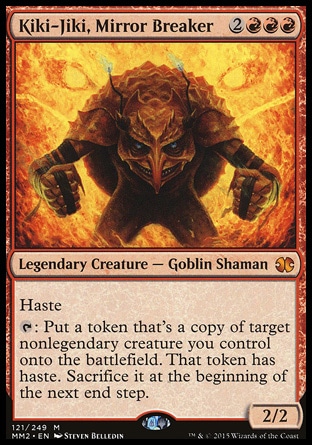
The Token will be controlled by the player who activated the ability, regardless of who will be in control of Kiki-Jiki, Mirror Breaker when the ability resolves.
The triggered abilities of Suspend function in the exile zone. Since a card in exile doesn’t have a controller, instead we use its owner, and the trigger will be controlled by the owner of the card with Suspend.
The spell itself and all of its Storm copies are controlled by the player who cast it, unless something unpredictable happens, such as Commandeer.
603.7d. If a spell creates a delayed triggered ability, the source of that delayed triggered ability is that spell. The controller of that delayed triggered ability is the player who controlled that spell as it resolved.
603.7e. If an activated or triggered ability creates a delayed triggered ability, the source of that delayed triggered ability is the same as the source of that other ability. The controller of that delayed triggered ability is the player who controlled that other ability as it resolved.
603.7f. If a static ability generates a replacement effect which causes a delayed triggered ability to be created, the source of that delayed triggered ability is the object with that static ability. The controller of that delayed triggered ability is the same as the controller of that object at the time the replacement effect was applied.
The delayed triggered ability will be controlled by the same player who controlled activated ability of Geist of Saint Traft as it resolves.
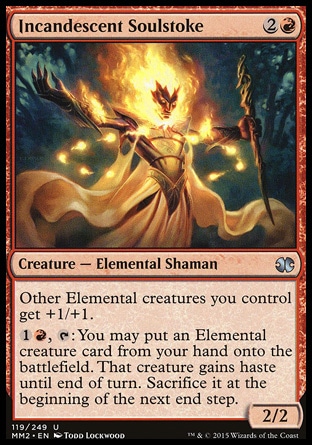
The delayed triggered ability is created upon Incandescent Soulstoke’s ability resolution. The player who activated its ability will control the delayed ability.

The source of the delayed triggered ability of Rebound is replacment effect of its static ability. The delayed triggered ability will be controlled by the same player who controlled the spell as it resolved.
I will remind that the order in which the triggered abilities are put on the stack depends on who controls the abilities
603.3b. If multiple abilities have triggered since the last time a player received priority, each player, in APNAP order, puts triggered abilities he or she controls on the stack in any order he or she chooses. (See rule 101.4.) Then the game once again checks for and resolves state-based actions until none are performed, then abilities that triggered during this process go on the stack. This process repeats until no new state-based actions are performed and no abilities trigger. Then the appropriate player gets priority.
Change of Control over a Spell
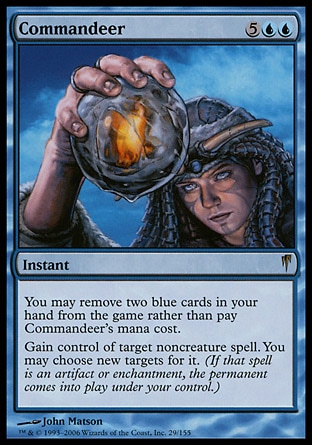
The Commandeer spell is unique in its kind, it allows to gain control of a noncreature spell.
After Commandeer resolves you control the target spell.
If the word “you” is in its text, now it refers to you, and the word “opponent” refers to your opponent.
Control of Another Player
Another kind of control swap is controlling another player. What happens at this time, what can the puppeteer do and what he cannot do, are the subjects of our next class.
Homework
You have gained control of the opponent’s Kitchen Finks. Under whose control will the Finks return as the Persist trigger resolves?
You have gained control of the opponent’s Finks. Under whose control will the Finks return as the Persist trigger resolves?
702.78a Persist is a triggered ability. “Persist” means “When this permanent is put into a graveyard from the battlefield, if it had no -1/-1 counters on it, return it to the battlefield under its owner’s control with a -1/-1 counter on it.”
The opponent gains control of your Windbrisk Heights. Who may now look at the card exiled with it?
Both you and your opponent. The rules for Hideaway state so:
(702.74a) (…) The exiled card gains “Any player who has controlled the permanent that exiled this card may look at this card in the exile zone.”
During your main phase, an opponent takes his Greater Gargadon out of Suspend. You “borrow” it with Mind Control. Can you attack with it?
No. The Gargadon will lose Haste as soon as it changes its controller. It is written in the rules for Suspend:
(702.61a) (…) “When the last time counter is removed from this card, if it’s exiled, play it without paying its mana cost if able. If you can’t, it remains exiled. If you cast a creature spell this way, it gains haste until you lose control of the spell or the permanent it becomes.”
You cast Mark of Mutiny targeting an opponent’s Roil Elemental. The spell resolves. Then you play a mountain. You choose the Elemental as the target for its own triggered ability. Who will control the Elemental when your turn is over?
You will. Despite the fact that the Mark’s effect is over, you continue to control the Elemental thanks to its own ability: “Control the Elemental as long as you control the Elemental”. Quite messy, indeed.
Your opponent casts Zombify tareting an Akroma, Angel of Wrath in his graveyard. You cast Commandeer targeting Zombify. Upon resolution of Commandeer you do not change the target. What happens?
Zombify will be countered. After Commandeer resolves you control Zombify targeting the Akroma in your opponent’s graveyard. As Zombify resolves, the legality of the target is checked: the target is not legal because it is not in your graveyard (the word “you/your” refers to the controller of the object). The spell is countered.
By the way, the target of Zombify may be changed to a creture card in your graveyard, then it can be returned to the battlefield.
Your opponent plays Spell Burst and pays Buyback. In response, you target Spell Burst with your Commandeer. Both spells resolve safely. What happens to the Spell Burst card?
Irregardless of who controls the spell, Spell Burst will return to its owner’s hand.
702.26a Buyback appears on some instants and sorceries. It represents two static abilities that function while the spell is on the stack. “Buyback [cost]” means “You may pay an additional [cost] as you cast this spell” and “If the buyback cost was paid, put this spell into its owner’s hand instead of into that player’s graveyard as it resolves.” Paying a spell’s buyback cost follows the rules for paying additional costs in rules 601.2b and 601.2e–g.
And in general, cards that go to a hand, library or graveyard can only go into these zones of their owner (and never their controller when it’s another player).
400.3. If an object would go to any library, graveyard, or hand other than its owner’s, it goes to its owner’s corresponding zone.
You put Sower of Temptation on the battlefield, and as it resolves, you take control of an opponent’s Very Important Creature. Later, the cunning opponent plays an Ixidron. Will you keep control of the kidnapped creature?
Yes. In this case, the following rule comes into effect:
201.4. Text that refers to the object it’s on by name means just that particular object and not any other objects with that name, regardless of any name changes caused by game effects.
The game only tracks the presence of the object that previously was the Sower. Nobody cares what that objct currently is. We will keep control of the VIC. Unfortunately for us, both the VIC and the Sower are now vanilla 2/2 creatures without abilities.
You control a Bear equipped with an Emblem of the Warmind. The cunning opponent casts Sower of Temptation in his turn and gains control of your Bear. Whose creatures will have Haste?
The cunning opponent has kidnapped your Bear equipped with Sylvok Lifestaff and throws it into combat where it dies valiantly. Who gains 3 life as the Bear finds its eternal rest in the graveyard?
You do! The triggered ability doesn’s belong to the Bear, but to the Staff, so the triggered ability is also under your control.
The cunning opponent hijacks your Mitotic Slime and sacrifices it as your own Consuming Vapors resolves. Who has control of the tokens if the Ooze hits the graveyard?
Your cunning opponent does, because he is the one in control of the Slime’s triggered ability.
Your opponent enchants your Bramble Elemental with Persuasion. Who gets a pair of Saprolings?
The triggered ability of the Elemental goes off at the moment when the aura becomes attached to it. At that moment the opponent is already in control of it, so he gets the tokens, too.
Shuriken is attached to a creature under your control which doesn’s have the Ninja subtype. Is it possible to “ping for two” with your Shuriken so that it remains under your control, but do so without recurring to the type-changing effects? If you can, what do you need to do it, and what actions do you need to take?
It is possible. To make it happen, we will need a) two creatures we control continuously since the beginning of our current turn, one of which whould be “fatter than 2”, and b) excellent knowledge of the rules. So, suppose we control the Bear equipped with the Shuriken, and a Giant.
So, at first we activate the Equip ability by targeting the Giant. Without passing priority (this is important!), we activate the Bear’s ability targeting an enemy creature. The Shuriken becomes unattached from the Bear. When the ability resolves, the enemy creature takes damage, the Shuriken goes to your opponent’s control.
Finally, the Shuriken’s Equip ability resolves. Let’s check the legality of the targets. The Shuriken is controlled by the opponent, however, we control the ability since we have activated it:
602.2a. The player announces that he or she is activating the ability. If an activated ability is being activated from a hidden zone, the card that has that ability is revealed. That ability is created on the stack as an object that’s not a card. It becomes the topmost object on the stack. It has the text of the ability that created it, and no other characteristics. Its controller is the player who activated the ability. The ability remains on the stack until it’s countered, it resolves, or an effect moves it elsewhere.
And since an ability under our control targets the creature under our control, all is good with Equip. The ability resolves, and the Shuriken becomes attached to the Giant.
Now, we control the Giant and the opponent controls the Shuriken. Note that the Giant has the activated ability, not the equipment, so, it may be activated only by the creature’s controller.
All we need to do is “ping the Giant iself“, and we get the unattached Shuriken under our control.
I hope it is clear now how you can kill a creature with 4 toughness with a Shuriken. How?
Translated by Witas Spasovski
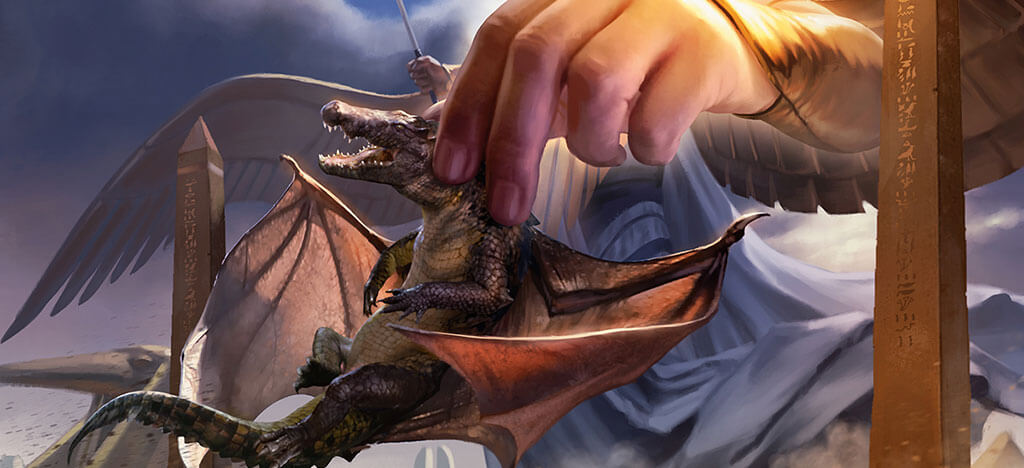
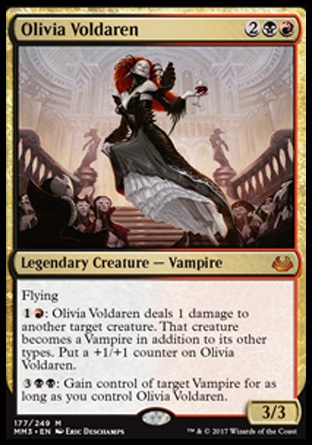
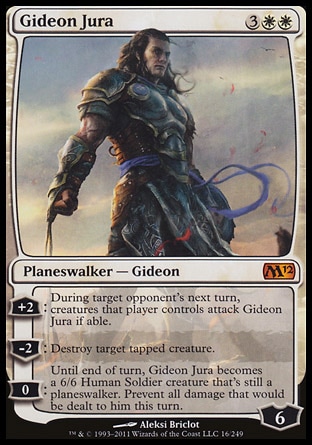

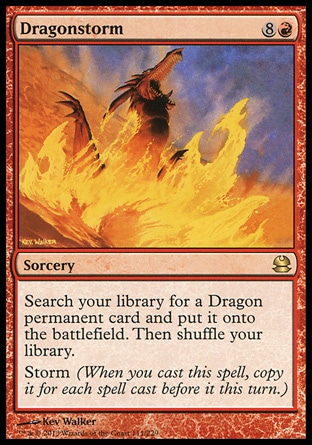

There are many ways to “borrow” a permanent. For instance, using enchantments.